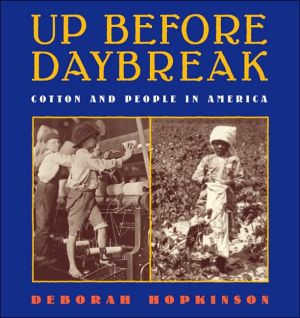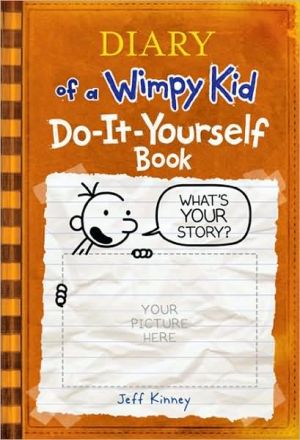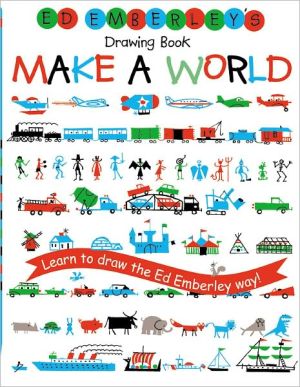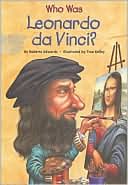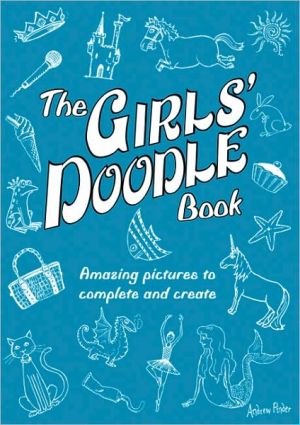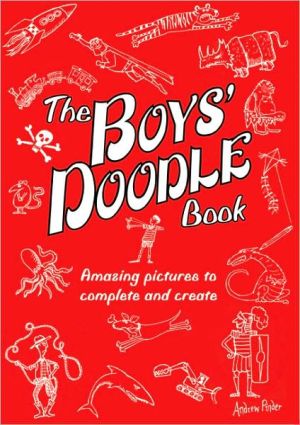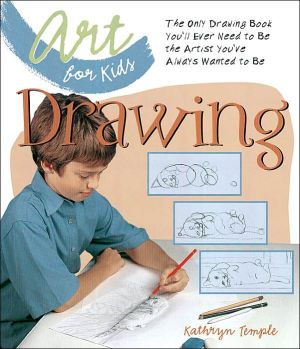Up before Daybreak: Cotton and People in America
In this stunning nonfiction volume, award-winning author Deborah Hopkinson weaves the stories of slaves, sharecroppers, and mill workers into a tapestry illuminating the history of cotton in America.\ In UP BEFORE DAYBREAK, acclaimed author Deborah Hopkinson captures the voices of the forgotten men, women, and children who worked in the cotton industry in America over the centuries. The voices of the slaves who toiled in the fields in the South, the poor sharecroppers who barely got by, and...
Search in google:
In UP BEFORE DAYBREAK, acclaimed author Deborah Hopkinson captures the voices of the forgotten men, women, and children who worked in the cotton industry in America over the centuries. The voices of the slaves who toiled in the fields in the South, the poor sharecroppers who barely got by, and the girls who gave their lives to the New England mills spring to life through oral histories, archival photos, and Hopkinson's engaging narrative prose style. These stories are amazing and often heartbreaking, and they are imbedded deep in our nation's history.Kevin Beach - VOYACotton came to the New World in 1607 with the first colonists and soon became a vital export crop. Cultivating and processing cotton was work intensive, however. The need for a cheap labor force was filled by increasing the flow of slave labor into America. This thoughtful work examines the lives of slaves who toiled from before dawn until after dusk in hot fields. Inventions like the cotton gin and their impact on the industry are also evaluated. Following chapters describe how post-Civil War sharecroppers continued to live in ex-slave quarters and scraped to get by, raising their own cotton crops and overpaying often-cruel landlords. Many children still worked the fields rather than playing or attending school. Meager diets of pork fat and flour led to prevalent malnourishment and disease. Also covered is the mill industry of the northern states where children were equally overworked. Girls spent the day at looms creating cloth or sewing in hot, oppressive factory buildings. Called "lintheads," they often faced taunts from other children. Generations of families could not escape this cycle of poverty. The boll weevil, droughts, the Great Depression, and technology eventually brought the era of handpicked and cultivated cotton to a close. The last chapter reminds the reader that children still work in fields and factories all over the world because of cotton. The author, renowned for writing juvenile historical fiction, incorporates poignant oral histories and powerful photographs to illustrate the human toll that the cotton plant has wrought. Her work here is highly recommended. VOYA CODES: 4Q 2P M J (Better than most, marred only by occasional lapses; For the YA with a specialinterest in the subject; Middle School, defined as grades 6 to 8; Junior High, defined as grades 7 to 9). 2006, Scholastic, 128p.; Index. Photos. Biblio. Source Notes. Further Reading., Ages 11 to 15.
\ From the PublisherStarred Kirkus Review\ "The voices of children weave through the story of cotton," and the story of cotton weaves through the story of our nation. Drawing on oral histories from the Federal Writers project of the 1930s and the oral-history interviews with Lowell mill workers in the 1970s and 1980s, Hopkinson makes history come alive through the voices of the people. Real people's stories are woven into a rich narrative of the history: clothmaking, the cotton gin, slavery, the Great Migration, the Great Depression and the continuing problem of child labor around the world. This volume, like the author's Shutting Out the Sky (2003), is a model of superb nonfiction writing and how to use primary sources to create engaging narratives. The prose is clear, the documentation excellent and well-selected photographs support the text beautifully. What might have been a dry topic is lively, the voices of the children vivid and personal. (Nonfiction. 9+)\ Booklist Starred Review The author of Shutting Out the Sky: Life in the Tenements (2003) here explains to middle-graders how "the story of cotton...is like a thread that stretches far back into America's past." In unraveling that thread from the industrial revolution to the 1950s demise of the Lowell cotton mills, Hopkinson discusses the general history and sociology of king cotton, frequently emphasizing the children who labored under slave masters, endured dead-end mill jobs, or helped sharecropping parents claw a living out of uncooperative soil. Stories of real people, such as mill girl Lucy Larcom who escaped the "incessant clash" of the looms to become a famous poet, sharply focus the dramatic history, as do arresting archival photos. Portraits of stern youngsters manipulating hoes, bags, or bobbins do as much as Hopkinson's fine writing to tell "the powerful and often heartbreaking story of cotton and people in America." Neither too long nor too dense, this won't frighten students reluctantly tackling research projects, and teachers and children alike will welcome the concluding list of relevant fiction and nonfiction for youth, the scholarly bibliography, and endnotes for both quotes and selected facts. Rarely have the links between northern industry, southern agriculture, slavery, war, child labor, and poverty been so skillfully distilled for this audience. Pair this with Russell Freedman's Kids at Work (1994)\ Horn Book Cotton has always been vital to the U.S. economy; here Hopkinson focuses on the hard lives of the people, especially the children, who raised the crop, took it to market, and turned it into cloth. Beginning with a quick history, she continues chronologically with chapters describing the world of "king" cotton -- for slaves in southern fields and young women in northern mills (using Lowell, Massachusetts, as an example) -- before the Civil War and after, when both growth and processing became dispersed, and the factories closed. Anecdotal vignettes from oral history enliven Hopkinson's account (and the author includes a helpful reminder of the limits of this material). A generous selection of historical photographs, documents, and illustrations, undated but attributed in the captions, accompanies the text. Generous, too, is the back matter, which includes appropriate suggestions for further reading, a selected bibliography, chapter notes, more specific photo credits, and an extensive index. This history really ends in the 1950s with the closing of the last mills in Lowell, but the author brings the story of child labor up to date with a reminder that children are still employed in cotton production in other countries. KATHLEEN ISAACS\ BCCB If children ever give that humble plant fiber, cotton, a second thought, it's more likely in regard to their denims and khakis than to American economic and social history. Hopkinson attempts a broad overview of cotton's impact on the nation- its i\ \ \ \ \ \ VOYACotton came to the New World in 1607 with the first colonists and soon became a vital export crop. Cultivating and processing cotton was work intensive, however. The need for a cheap labor force was filled by increasing the flow of slave labor into America. This thoughtful work examines the lives of slaves who toiled from before dawn until after dusk in hot fields. Inventions like the cotton gin and their impact on the industry are also evaluated. Following chapters describe how post-Civil War sharecroppers continued to live in ex-slave quarters and scraped to get by, raising their own cotton crops and overpaying often-cruel landlords. Many children still worked the fields rather than playing or attending school. Meager diets of pork fat and flour led to prevalent malnourishment and disease. Also covered is the mill industry of the northern states where children were equally overworked. Girls spent the day at looms creating cloth or sewing in hot, oppressive factory buildings. Called "lintheads," they often faced taunts from other children. Generations of families could not escape this cycle of poverty. The boll weevil, droughts, the Great Depression, and technology eventually brought the era of handpicked and cultivated cotton to a close. The last chapter reminds the reader that children still work in fields and factories all over the world because of cotton. The author, renowned for writing juvenile historical fiction, incorporates poignant oral histories and powerful photographs to illustrate the human toll that the cotton plant has wrought. Her work here is highly recommended. VOYA CODES: 4Q 2P M J (Better than most, marred only by occasional lapses; For the YA with a specialinterest in the subject; Middle School, defined as grades 6 to 8; Junior High, defined as grades 7 to 9). 2006, Scholastic, 128p.; Index. Photos. Biblio. Source Notes. Further Reading., Ages 11 to 15. \ —Kevin Beach\ \ \ Children's LiteratureA portion of my adult life was spent in Massachusetts. I was well aware of the textile mills in Lowell, Massachusetts, but I did not connect all of the dots regarding the industry dating back to slavery times. The author has done an excellent job of relaying the history of the American cotton industry from the 17th century through the 1950s. African slaves, very young children, sharecroppers, tenant farmers, and women mill workers all made the success of the cotton industry possible under unbearable working conditions. The oral histories that are included plainly indicate that these adults and young children were impoverished and often unable to improve their living conditions. Hopkinson closes with comments on the child workers that still exist around the world. She urges that when we are buying clothes made of cotton we should look at the label and do some research on the working conditions of where the clothes were made. 2006, Scholastic, Ages 13 to 17. \ —Leila Toledo\ \ \ \ \ School Library JournalGr 4-8-Making excellent use of primary sources (even noting when these sources may be less than accurate) and extended with black-and-white photos and period reproductions, this excellent work gives a detailed picture of the effect of cotton production on the social structure of the United States. From 1607, when the earliest English settlers arrived in Virginia, cotton was among the plants grown in colonial gardens. With the onset of the Industrial Revolution in England, the demand for it increased, and the southern colonies found it lucrative to step up production. That cotton culture was part and parcel of the slave system becomes clear in this thoughtfully composed volume. Hopkinson also considers the young women who flocked to Lowell, MA, and the surrounding area to work in the textile factories. After the Civil War, the southern economy remained dependent on cotton, trading the slave system for a sharecropping system, and moving many of the mills to the south. Following workers' histories up through the Great Depression, the final chapter discusses child labor in the past and present. This informative work extends titles such as Arthur John L'Hommedieu's From Plant to Blue Jeans (Scholastic Library, 1998). A first-rate report and research source.-Ann Welton, Grant Elementary School, Tacoma, WA Copyright 2006 Reed Business Information.\ \ \ \ \ Kirkus Reviews"The voices of children weave through the story of cotton," and the story of cotton weaves through the story of our nation. Drawing on oral histories from the Federal Writers project of the 1930s and the oral-history interviews with Lowell mill workers in the 1970s and 1980s, Hopkinson makes history come alive through the voices of the people. Real people's stories are woven into a rich narrative of the history: clothmaking, the cotton gin, slavery, the Great Migration, the Great Depression and the continuing problem of child labor around the world. This volume, like the author's Shutting Out the Sky (2003), is a model of superb nonfiction writing and how to use primary sources to create engaging narratives. The prose is clear, the documentation excellent and well-selected photographs support the text beautifully. What might have been a dry topic is lively, the voices of the children vivid and personal. (Nonfiction. 9+)\ \
